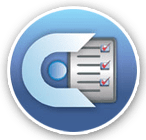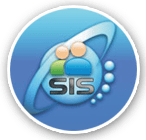Here are some common OMR filling mistakes to be aware of:
Incorrect Bubbling:
• Filling the wrong bubble for a given question.
• Skipping a question or bubbling multiple bubbles for a single question.
Misalignment:
• Bubbling in the wrong row or column, especially when questions are presented in a grid format.
Incomplete Bubbling:
• Partially filled bubbles that may not be recognized by the scanning system.
Overlapping Bubbles:
• Bubbling in a way that the ink overlaps with adjacent bubbles, potentially causing misinterpretation.
Erasing Mistakes:
• Using erasers or correction fluid, as it might leave residues or cause the answer sheet to be rejected during scanning.
Exceeding the Allotted Space:
• Writing or marking outside the designated areas on the OMR sheet, which may not be captured accurately during scanning.
Using the Wrong Writing Instrument:
• Some exams specify the type of pen or pencil to be used. Using an incorrect writing instrument may lead to scanning errors.
Failure to Follow Instructions:
• Not following specific instructions provided by the examination authorities, such as marking answers in a particular manner or using a specific color.
Unintentional Marking:
• Marks made unintentionally, such as stray marks or accidental smudges, which may interfere with the accuracy of the scanned data.
Late or Rushed Bubbling:
• Rushing through the process, especially towards the end of the exam, may lead to more errors.
Best black ball pen to fill OMR sheets.
Choosing the best black ballpoint pen for filling OMR sheets and doing rough work quickly in competitive examinations often depends on personal preferences and the specific requirements of the examination. However, here are some general recommendations:
Smoothness and Consistency: Look for a pen that offers smooth and consistent ink flow. This is important for filling OMR sheets quickly and ensuring that the marks are clear and legible.
Quick Drying: Opt for a pen with quick-drying ink to prevent smudging. This is crucial when you need to move quickly through the examination, as wet ink can cause smears on the paper.
Dark Ink: Choose a pen with a dark, bold ink color (preferably black) to ensure that your marks are easily readable by scanning machines used for OMR sheets.
Comfortable Grip: Since competitive examinations can be lengthy, a pen with a comfortable grip can help reduce fatigue during extended periods of writing.
Reliability: Select a pen from a reputable brand known for reliable and consistent performance. You wouldn't want the pen to stop working or skip while you're in the middle of filling out an important section.
To minimize these mistakes, it's crucial to read and follow the instructions carefully, take your time when bubbling, and review your answers before submitting the OMR sheet. Additionally, using a reliable and quick-drying pen with proper ink can help ensure accurate scanning and reduce the risk of errors.
Commonly recommended pens for such purposes include brands like Pilot, Uni-ball, and Pentel. The specific model may vary based on personal preferences, as different individuals may find different pens more comfortable to use. It's a good idea to test a few pens beforehand to see which one you feel most comfortable with. Additionally, some competitive exams may have specific guidelines regarding the type of pen allowed, so be sure to check the rules and regulations provided by the examination authority.







